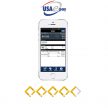
Why Payment Security Is Critical for Online Transactions
A growing number of consumers worldwide do their shopping online. As such, many businesses have adapted to accept online transactions—or even do all of their selling online.
However, all that data transmitted and stored online is at risk from outside threats. Hackers and other malicious entities could use the customer’s personal details and other sensitive information to commit crimes such as identity theft and fraud, which are growing trends in recent years.
Implementing online security measures will help protect your data and your business as a whole.
This post discusses what payment security entails and how you can make the online payment experience safer for your customers.
What Is Payment Security?
Online payment security refers to all the regulations and measures that protect customers’ information and the money involved in their transactions. Securing payments online means considering all possible ways the data could get compromised, such as software vulnerabilities, malware, or even weak passwords.
Investing in this type of security protects customers and their data from cyberattacks and maintains the trust they’ve placed in your business. Moreover, safer transactions encourage people to buy more goods or services from you.
Online Transaction Security Measures for Your Business
Let’s take a look at the steps involved in securing online payments.
Become PCI-Compliant
If your business accepts credit card payments, you’ll need to comply with PCI standards. The Payment Card Industry Security Standards Council (PCI SSC) is an organization that sets the guidelines businesses are required to follow to protect cardholder data.
Some of the requirements for PCI compliance include:
- Using firewalls to block unauthorized access
- Installing anti-virus software for all devices connected to the business network
- Creating access logs to monitor data movement in your business
The exact standards your business has to follow depends on how many credit card transactions you process in a year. There are four compliance levels, which are:
- Level Four: Below 20,000 transactions
- Level Three: 20,000 to 1 million transactions
- Level Two: 1 to 6 million transactions
- Level One: More than 6 million transactions
In general, the more annual transactions, the stricter the standards, as there is more sensitive data at risk.
Not complying with PCI standards can be legal grounds for customers or credit card companies to sue your business if a security breach happens.
Get SSL Certification
If your business sells its products on its own website, you’ll need SSL certification. Secure Sockets Layer (SSL) is an encryption protocol that provides an encrypted link between your web server and the customer’s browser. You can tell a website has SSL because its URL will start with HTTPS, and there will be a padlock icon near it on the browser.
SSL helps ensure that any data transmitted between the server and browser—such as credit card information—stays private. If a website is unsecured, a hacker can monitor the site and wait for someone to type in their credentials. With that information, they can log into that person’s account.
You can typically get your SSL certificate from a web hosting provider or third-party vendor. However, payment processors may also offer SSL encryption for their payment portals.
Tokenize Your Customer Data
To protect your customer’s payment information even further, payment processors like Preferred Payments can also use a program to tokenize the data. Tokenization takes the data and switches it with random number strings for your business’ system to use. The actual data is stored in a completely separate cloud storage space, in case you need it later on.
What makes tokenized data effective is that even if hackers got their hands on it, they wouldn’t have access to the authentic credit card numbers they’re seeking.
Set Up an Address Verification System
An address verification system or AVS is a fraud prevention tool that lets processors check the customer’s inputted billing address and determine whether it’s the same one on the credit card issuer’s files.
The AVS works when the customer goes through the purchasing process and has to input their credit card number, name, billing address, and so forth. After the customer submits the order, the processor will send the details to the credit card issuer to compare billing addresses. If the addresses don’t match, the transaction gets rejected.
AVS isn’t 100 percent foolproof, as it can reject orders from legitimate customers who just haven’t updated their billing address yet. However, it can still prevent others who’ve gotten a customer’s credit card number from using the card themselves.
Use a 3D Secure Protocol
The 3D Secure Protocol is a verification procedure that involves three domains or parties (hence the name 3D) in an online credit card transaction:
- The credit card issuer
- The acquiring merchant
- The interoperability domain (the card payment system)
Visa and Mastercard developed this extra payment security method through their Verified by Visa and Mastercard SecureCode features. By getting all three domains involved in verifying the customer’s identity, the 3D Secure protocol can eliminate potential fraud more effectively than just AVS.
The process starts after the customer finishes checking out. First, the payment system checks whether the card is registered to the issuer’s 3D Secure feature. If it is, the system redirects the customer to the card provider. The customer is then required to input a special password before the issuer sends a verification code to their registered email address or phone number.
If the authentication is successful, the customer is brought back to the merchant site to confirm their payment.
Other Online Payment Security Tips
While all the above measures can significantly reduce the risk of payment data breaches, you can take other simple and effective security measures.
Assess Your Security Regularly
Check on your business’s online security system regularly to ensure that it’s updated. For instance, SSL certificates typically expire after one or two years, so they must be renewed to keep providing a secure connection for customers buying products via your website.
Choose a Reliable Payment Processor
Partnering with a payment processor with stringent security measures goes a long way toward protecting your customer’s data and maintaining your business’s trustworthiness.
When shopping around for a processor, don’t hesitate to research its security features. Not every provider offers the same types of payment security measures. What level of PCI compliance do they offer? Do they tokenize payment data, or do they support 3D Secure instead?
We Take Your Security Seriously
Your payment security should always be a top priority. Here at Preferred Payments, we ensure that online credit card payments are fully protected with PCI Level 1 encryption to keep cardholder data secure throughout the entire transaction. The data will also get tokenized and stored in a secure customer vault for future transactions with repeat customers.
Sign up with us today to get started with seamless and secure payment solutions with our ECRYPT payment platform. With ECRYPT, you can rest assured that your customer’s data is kept safe with point-to-point encryption covering the transaction from beginning to end.
View our pricing plan and request a free rate review to discover how you can save money and improve service with ECRYPT.
Ready to get started?
Get in touch or create an account





